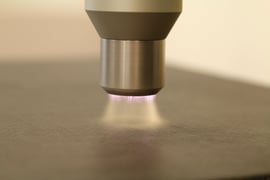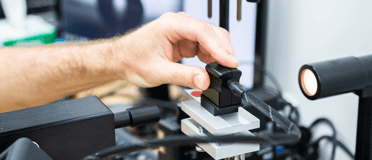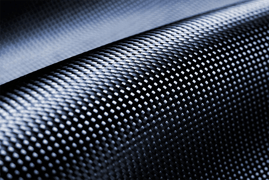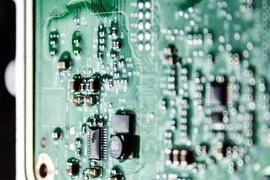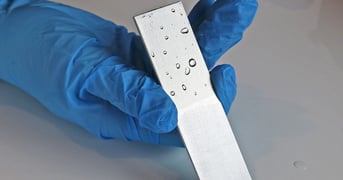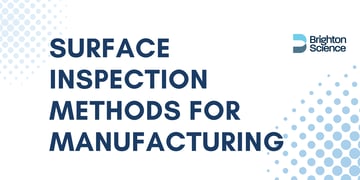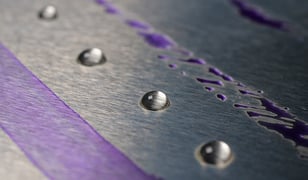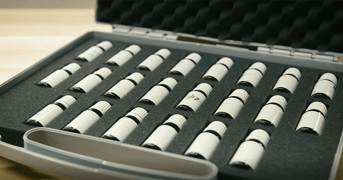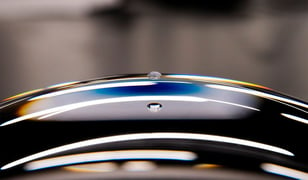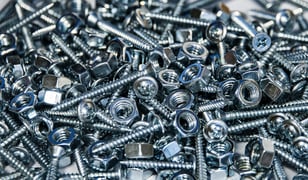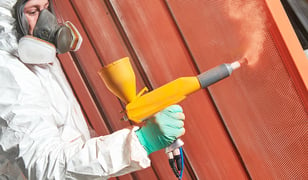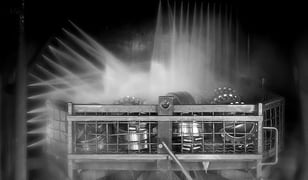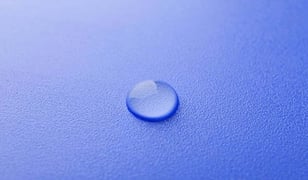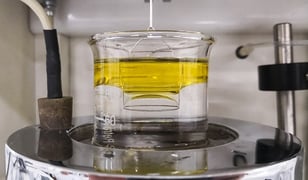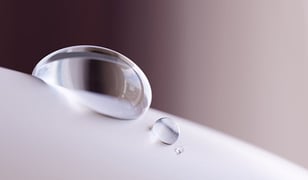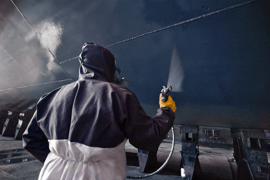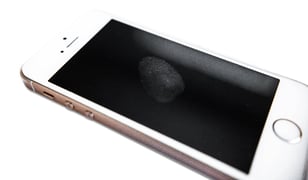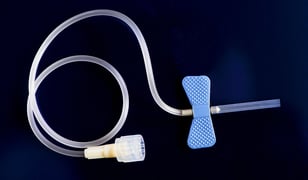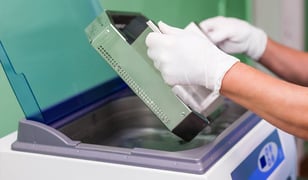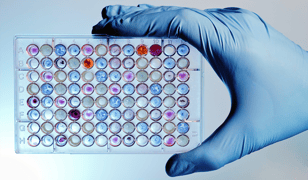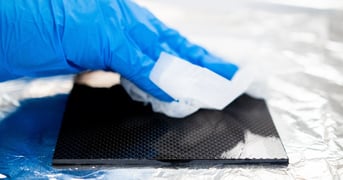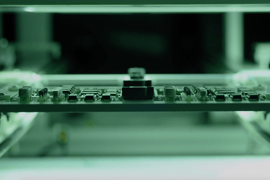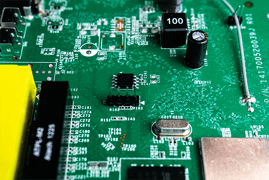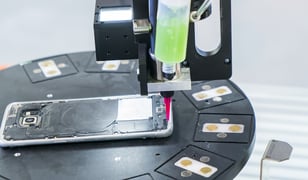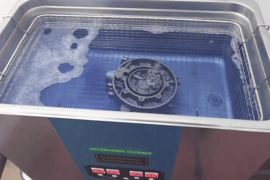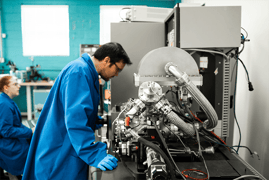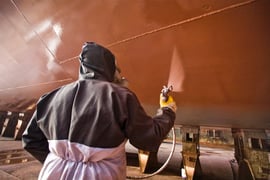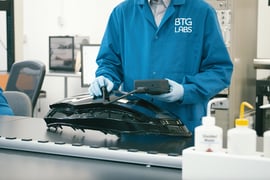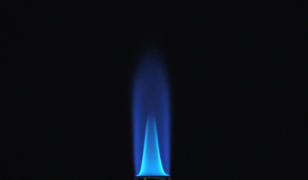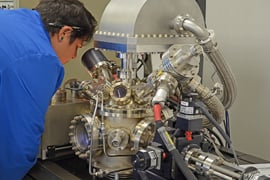Speed vs. Quality: How Manufacturing Sectors Balance Risk, Cost, and Innovation
In every manufacturing environment, there's one constant tension: how to move fast without breaking things. Whether you're building airplanes, cars, consumer electronics, or medical devices, the same tradeoff exists: production speed versus product quality.
Read
Topics:
Posts by Topic
Comprehensive Guide to Understanding X-ray Photoelectron Spectroscopy (XPS) for Surface Analysis
X-ray photoelectron spectroscopy (XPS) is a sensitive surface analysis technique with broad applications across numerous industries. Beyond its fundamental role in materials characterization, XPS can provide critical information to solve real-world material challenges. With the help of Rose...
Read
Topics:
Environmental Silicone: Detection, Control, and Impact on Adhesion in Manufacturing
Silicone contamination is a huge problem in many painting and bonding applications. It’s impossible to see, hard to remove, and it creeps in unseen like a ghost. Where the harm it can cause is recognized, businesses go to great lengths to clean surfaces and exclude potential sources of...
Read
Topics:
Turn Complaints into Customer Satisfaction & Loyalty: Why Surface Chemistry Knowledge Matters
Imagine this: manufacturers and suppliers of cleaning solutions, coatings, adhesives, inks, and more receive countless customer calls daily. The common thread? Disappointment. Customers report their products aren't performing as expected – the paint isn't adhering, the adhesive bond is failing, or...
Read
Topics:
Gaining a Competitive Edge: The Power of Surface Analysis with Brighton Science
Every manufacturer that bonds, coats, paints, seals, or cleans needs objective surface measurement technology. It's the key to compressing lead times, reducing waste, and improving product consistency. Brighton Science has a versatile suite of solutions for surface analysis based on water contact...
Read
Topics:
What is Surface Treatment? A Comprehensive Guide to Surface Treatment Methods for Manufacturers
In the world of manufacturing, surface treatment plays a crucial role in achieving high-performance adhesion. Whether bonding, coating, sealing, painting, or printing, every manufacturer understands the significance of a well-defined adhesion process. Think of adhesion as the glue that holds a...
Read
Topics:
Contact Angle Goniometer 101: A Guide to Successfully Measuring Contact Angle
Have you wondered why some paints or coatings adhere effortlessly while others leave blisters or bubbles? The answer lies in wettability, the intricate dance between a liquid and a surface governed by a powerful principle known as contact angle. And measuring this microscopic tango? That's where...
Read
Topics:
Fundamentals of Adhesion Science & Why 3 Molecular Layers Matter
Adhesion is crucial in microscopic and macroscopic worlds, yet it is an often-overlooked force. Adhesion acts as the invisible glue that unites objects, both massive and minute. Adhesion allows us to construct monumental structures like bridges, buildings, and airplanes. It enables us to glue wood...
Read
Topics:
4 Common Factors that Impact Conformal Coating Adhesion
The widespread use of electronics in all manufacturing sectors has presented distinct difficulties. Manufacturers are responsible for safeguarding these electronic devices in harsh conditions that render electronics susceptible to even the slightest traces of moisture, particles, and environmental ...
Read
Topics:
Silicone Contamination: The Invisible Intruder to Quality in Assembly Line Production
Some manufacturers go to extraordinary lengths to eliminate the presence of silicone in their manufacturing facilities. Some manufacturers invest significant resources in cleaning procedures to eradicate any silicone contamination. These approaches can be revolutionized by the development of a...
Read
Topics:
How to Propel Enterprise Success through Effective Knowledge Sharing of Bonding Processes
Wind turbines have a problem: their giant blades fail more often than anticipated. Research on the issue, reported in the journal Materials, notes an average of 3,800 failures each year. Many of these result from adhesive bonding defects, which should be addressed and prevented through improved...
Read
Topics:
Maximize Manufacturing Excellence: Harness the Potential of Surface Quality Verification and Certification
In manufacturing, surfaces hold immense significance, and their value can be traced back to the inception of the Federal Aviation Administration (FAA) during the 20th century. The establishment of the FAA emerged as a response to mounting concerns surrounding quality control and the occurrence of...
Read
Topics:
The Water Break Test as a Surface Measurement Gauge
The water break test is a common way for manufacturers to test the surface cleanliness of metal surfaces. Compared to other legacy cleanliness tests, it is relatively simple to perform. However, the results rely almost entirely on the subjective eye of the person performing the test. Hydrophobic...
Read
Topics:
Surface Inspection 101: A Visual Guide to the Surface Analyst, Water Break Tests, and Dyne Ink
In the manufacturing industry, it is crucial to meet certain surface preparation requirements in order to ensure the safety and reliability of products. Various tests have been developed to determine if these requirements are being met and if the cleaning process has been effective enough to...
Read
Topics:
Demystifying Dyne Levels: A Comprehensive Guide
The evaluation of material surfaces in terms of quality has long relied on dyne testing. Despite their drawbacks, such as subjectivity, imprecision, damage to surfaces, and safety risks for users, dyne tests have remained popular among manufacturers due to their wide availability and affordability....
Read
Topics:
Discover the Top Alternative to Dyne Testing That Gets Results
Dyne solutions have been the most common method of quality-checking material surface cleanliness for decades. Their ubiquity and low cost have led them to be heavily relied upon by manufacturers even though they are imprecise, destructive to surfaces, and harmful to the user. The science behind...
Read
Topics:
How to Measure Contact Angle on Convex and Concave Surfaces
Historically, accurately measuring contact angles on concave and convex surfaces has been a challenge. The typical method used to measure contact angle on these types of surfaces has been with abenchtop goniometer. The challenges arise from how goniometers measurecontact angle—from a horizontal...
Read
Topics:
Meet Brighton Science's Chief Scientist, Giles Dillingham
A Deep History in Materials Science Founder and Chief Scientist of Brighton Science, Dr. Giles Dillingham's fascination with the connections between the invisible (the molecular structure of the world around us) and the perceivable (the properties and behavior of materials and objects) stems from a...
Read
Topics:
Surface Preparation for Primer Coating of Composites in Aerospace Applications
Achieving a flawless, long-lasting paint job on an aircraft is a complex undertaking. This multi-stage process starts well before the final coat graces the wings and tail. Components are meticulously molded, prepared (often involving multiple steps), assembled, and then coated with primers and...
Read
Topics:
Surface Quality Measurements Enable Plating and Coating Chemistry Suppliers to Guarantee Quality to Their Customers
Automotive supply chains are complex. Nearly 78 million vehicles were manufactured in 2020. Each vehicle may have upwards of 30,000 individual parts. Automotive original equipment manufacturers (OEMs) need to manage billions of parts annually. If any of these parts fail, vehicle performance is...
Read
Topics:
Why Knowing Water Contact Angle is Important for Successful Adhesive Performance
Adhesives are an integral part of modern manufacturing, but choosing the right adhesive is only one part of the equation. It’s well known that you won’t get a reliable bond with an adhesive if you just slap the adhesive onto your material without doing anything to prepare that surface. What ISN’T...
Read
Topics:
How to Avoid Polymeric Coating Failure Which Leads to Corrosion in Materials
These days, if you see a painted product, it is likely a polymer-based coating providing a striking and powerful barrier between the underlying material and elements in the atmosphere that want to corrode that material. Polymer coating technology has advanced tremendously in the last decade....
Read
Topics:
What are Surfactants and How Do They Impact Surface Tension?
In recent articles, we’ve discussed what surface tension and surface energy are. Manufacturers must acquaint themselves with these concepts because controlling surface quality through surface energy measurement of solid materials is the most predictive method of ensuring high-performance bonds and...
Read
Topics:
What is the Difference Between Surface Free Energy and Surface Energy?
When it comes down to it, this is another purely semantic question, much like the one we dealt with in another article comparing the terms “surface tension” and “surface energy.” Surface-free energy is free energy in a particular space - the surfaces of materials. Free energy, in its most...
Read
Topics:
How to Measure Surface Tension
The attractive force of the molecules present at the surface of a liquid towards each other is called the surface tension of that liquid. It may seem like a little thing (and in terms of mass, it doesn’t really get much smaller than the top few molecular layers that make up the surface of a liquid...
Read
Topics:
What is the Difference Between Surface Tension and Surface Energy
Using adhesives in manufacturing is becoming increasingly common for building everything from massive machines to everyday tech devices. But companies' reliance on the science of adhesion to make sure their products work perfectly and look marvelous didn’t start there. In the centuries since the...
Read
Topics:
Topcoat to Primer Surface Reliability for Aircraft Painting
Adhesion problems don’t have a preference when it comes to the kind of damage they cause. Whether the end result is structural or cosmetic, adhesion-related failure headaches for manufacturers abound. One of the most crucial aesthetic operations for aircraft OEMs is the topcoat of paint, although...
Read
Topics:
Better Consumer Electronics Reliability: Coatings and Adhesives
In a recent study conducted by Instrumental, the top ten most common manufacturing defects were examined. The number one defect that manufacturers fight against is a deficiency in glue.
Read
Topics:
The Best Method of Controlling HMDS Use in Semiconductor Manufacturing
Semiconductors are one of the most fascinating areas of electronics manufacturing. The ability to “grow” almost irreducibly small integrated circuit components on silicon wafers has made an incredible amount of micronization possible. The theory has always been that as the chips got smaller, their...
Read
Topics:
Surface Preparation for Reliable Optical Coatings in Photonics Manufacturing
Coatings are an indispensable part of manufacturing photonics. The coatings help determine the most basic functionality of the lenses they are applied to. How much light passes through, what happens to that light when it passes through the lens, does some light get absorbed, and are some spectral...
Read
Topics:
Ensuring the Durability of Oleophobic Coatings on Consumer Tech
Today, we're much more aware of the surfaces we touch and the potential unseen threats that linger on them. This focus on surface interaction isn't new for manufacturers, who've long considered how surfaces interact with our skin and the environment. Think about it – the simple act of touching...
Read
Topics:
How to Know if Hydrophilic Coatings on Medical Devices Provide the Necessary Comfort for Patients
Comfort is more than just a nice thing to hope for when it comes to medical devices like tubing, catheters and stents that are implanted into the human body. Comfort, in this instance, refers to the absence of pain. Having a piece of plastic or metal inserted into your body is never going to feel...
Read
Topics:
Coatings on Car Sensors and Why We Don’t Have Driverless Cars Yet
Our relationship with our vehicles may have changed in the past few months, with the idea of commuting to work looking more like a shuffle to the desk across the room rather than a drive to the office across town. However, cars have not dropped in prominence in our society. With health risks now...
Read
Topics:
Controlling Parts Washing Methods for Medical Components
Cleanliness is next to production standardization requirements for medical device manufacturers (as the old saying goes). Devices built to be inserted within the human body understandably need to meet the highest cleanliness standards. Companies in this industry have already known what many of us...
Read
Topics:
How to Control Additive Blooming in Polymer Films
We all take the ease of peeling open and resealing packs of double-stuff Oreos for granted. The plastic packaging that maintains the freshness of our favorite snacks and foods has become so ubiquitous it doesn’t even register as existing until we try to open that hotdog pack with our bare hands or...
Read
Topics:
The Best Way to Verify Medical Diagnostics Coatings
The biomedical industry runs on testing. Testing is at the heart of meeting extensive requirements to ensure healthcare practices and facilities are safe. A kind of testing that has been on all of our minds lately is the kind of testing that analyzes the presence of diseases. Often these tests...
Read
Topics:
How to Protect Overmolded Connectors for Medical Devices
Protective coverings are part and parcel of our lives these days. For industries reliant upon electronic components and connectors, protective coverings in the form of polymeric over-molding encapsulation need to remain sealed and impervious to the environment.
Read
Topics:
How to Bond PTFE to Anything
Polytetrafluoroethylene, or PTFE, is a very common material widely used in almost every major industry. This ultra-lubricious and multi-use fluoropolymer touches everyone from the aerospace and automotive industries (as an insulating cover on cabling) to musical instrument maintenance (it’s found...
Read
Topics:
Cleaning Strategies for Great Adhesion
Cleanliness in manufacturing gains avid devotees all the time. Once the importance of cleanliness is grasped, it’s nearly impossible to think about manufacturing processes without considering the pervasive impact cleanliness has on every aspect and feature of the process.
Read
Topics:
Why Surface Cleanliness is Crucial for Electronic PCBs
Defining “clean” is actually more complicated than it sounds. Cleanliness can be in the eye of the beholder (I mean, we all had a college roommate who swore they were tidy, but let’s be honest…), and it can also be calculated and precisely managed to the nth degree. In regard to PCB cleanliness for
Read
Topics:
Conformal Coating Failure Caused by Poor Surface Cleanliness
Electronic components consist of many exposed and delicate pieces that leave them vulnerable. A lot is relying on these fragile parts to function without fail. From implantable medical devices to navigational equipment and from sensor packages in cars to cell phones, the manufacturers of electronic...
Read
Topics:
Is Roughness as Important as Surface Cleanliness to Adhesion?
When manufacturing engineers discuss material surfaces, they usually focus on their physical attributes, such as surface topography or morphology or, more simply, surface roughness. Preparing material surfaces for assembly, coating, painting, or adhesive bonding typically includes steps that...
Read
Topics:
The 3 Crucial Elements for High-Performance Adhesion in Manufacturing
Excellent adhesion relies on the manufacturer’s ability to understand and control three distinct yet interrelated elements. In manufacturing, adhesive bonding takes many forms, but the fundamental principles of adhesion are always the same. Even if the application is metal joint welding, Parylene...
Read
Topics:
Best-practice Surface Preparation Processes for New Products
New Product Development is an essential component to the successful growth of companies that always challenge themselves to improve and innovate. Getting this design stage right is pivotal in that it sets in motion everything the product will be and how well it will perform.
Read
Topics:
How to Ensure a Manufacturing Surface is Clean Enough for Adhesion
Cleanliness and adhesion go hand-in-hand. If you’re looking for an adhesion process to be successful, you are also absolutely interested in cleaning the materials involved in the application. To get the most out of your cleaning operations, it’s imperative to know three things: What does clean...
Read
Topics:
Can a Surface Science Lab Ensure Adhesion in Manufacturing?
Manufacturers utilize research and design laboratories all the time. To scale new products up to the production line, years of toiling in testing labs are done to ensure that everything goes off without a hitch once production starts.
Read
Topics:
Deck the Hulls: Preparing Ship Hulls for Coating and Painting
Manufacturing a product to withstand the environmental stresses of wind, rain, and sediment is challenging enough. But, when you add saltwater and wave action to the mix, the detrimental threat of corrosion increases significantly. A coating adhesion test is important for quickly testing a surface...
Read
Topics:
Guaranteeing Anti-fog Coating Application on Automotive Headlights
The competitive nature of the automotive industry requires manufacturers to engineer the ideal product; failures, no matter how small, are unacceptable and can bring heavy consequences.
Read
Topics:
Teflon: More Than Just Pots and Pans
Teflon is a household name that commonly invokes images of eggs sizzling on a skillet, spatulas flipping pancakes, or rice steaming in a pan. But there is much more to this magical non-stick coating.
Read
Topics:
Surface Treatment Processes: Flame Treatment
Flame treatment is a surface activation treatment process used to chemically modify a surface for better adhesion. This process is typically used on low-energy surfaces that can be difficult to adhere to, such as plastics and composites. The treatment is also very gentle, posing low risk to the...
Read
Topics:
Brighton Science's Exceptional Lab: Experts in Advanced Materials and Processes
Brighton Science Lab Capabilities The history of Brighton Science (formerly BTG Labs) is rooted in adhesion research. Originally a development lab, Brighton Science specialized in plasma polymerized coatings. The engineers worked with coatings containing corrosion-resistant and anti-microbial...
Read
Topics:







